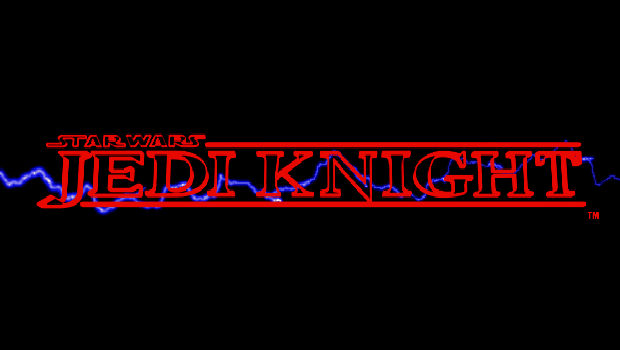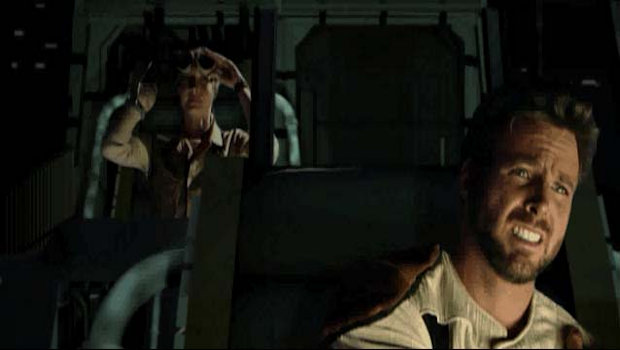When I first played the follow-up to Dark Forces, Jedi Knight, in 1997, I was amazed at the look of the game. Dark Forces look good at the time but Jedi Knight blew it out of the water. It felt so much more real. A lot of that feel probably came from the live action cutscenes, which were a couple years before The Phantom Menace and the closest thing I had gotten to a Star Wars movie in fourteen years.
Going back to it now, twenty years and five official Star Wars films later, Jedi Knight’s live action cutscenes come off as a low rent fan film. That isn’t to say that there isn’t a lot of charm to them or that the game itself isn’t a ton of fun though. Because it does and it is, and it’s still one of the crown jewels of Star Wars videogames.
Taking place after the events of Return of the Jedi, Kyle Katarn is on the hunt for the murderer of his father. This hunt takes him to Nar Shaddaa where he finds out the person he is looking for is the Dark Jedi Jerec. Jerec has plans to rebuild the Empire by utilizing a long hidden power nestled within the long lost Valley of the Jedi. Kyle takes it upon himself to stop Jerec and avenge his father.
As a direct sequel to Dark Forces, Jedi Knight is primarily set from the first person perspective. But there is also the option to play in third person. This perspective change is because Kyle eventually learns that he is force sensitive and on his path to become a Jedi, he will wield a lightsaber. Trying to lightsaber battle in first person is less than fun, and while third person isn’t exactly great, at least you can see around you as you battle.
At the time I didn’t think anything of the Jerec’s abnormally large band of Dark Jedi wielding lightsabers and force powers so shortly after the death of the Emperor and Darth Vader. It just seemed fun. Looking at it now in conjunction with Kyle’s ascension to the role of Jedi Knight, the whole thing is absurd. Where did all these Dark Jedi come from? Was the Emperor aware of their existence and they were just never mentioned in the films? Why is Kyle able to become a Jedi Knight by watching holovids of his Dad? Was his force power dormant and turned on by the holovid because he didn’t do anything remotely force powered in Dark Forces? Thankfully Disney wiped away these questions when they took over the franchise.
Jedi Knight’s level design is smarter and more layered than the obtuse and often times frustrating design of Dark Forces. There are still the odd environmental puzzles that don’t make a whole lot of sense and will leave you scratching your head, but in general it’s a better flowing game. Because the level design is better, the combat is able to take center stage. With the added ability to utilize force powers and a lightsaber, combat is more dynamic. It is still great fun to shoot stormtroopers and other agents of the Empire with a blaster or blow them up with a thermal detonator. But nothing quite beats deflecting a pair of incoming blaster bolts and moving in to chop off the arm of an enemy.
While the gameplay is a blast, the charm of the game comes from the low-rent fan film feeling live action cutscenes. Somehow though, and maybe this is the magic of LucasArts, Jedi Knight: Dark Forces II feels decidedly Star Wars. And that is the most important aspect of a Star Wars game, it has to feel right. If it doesn’t the illusion breaks down and the questions begin to creep in and take hold. For as goofy and over-the-top as it is, Jedi Knight never breaks that illusion. You feel like a Jedi Knight by the end and I can’t think of a better endorsement than that for a Star Wars fan.


